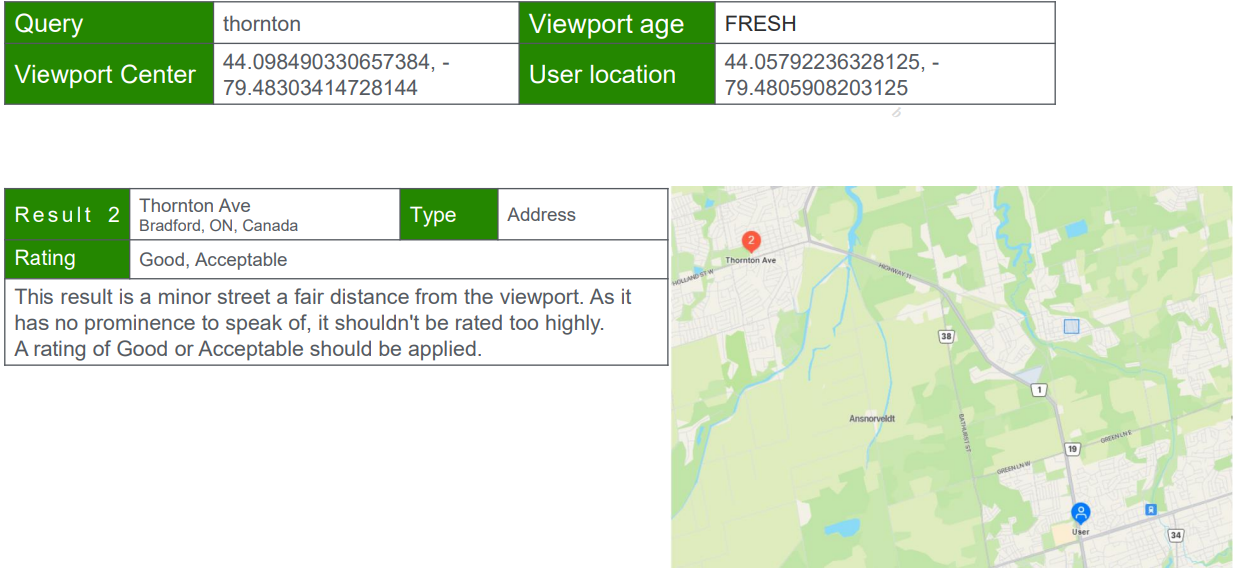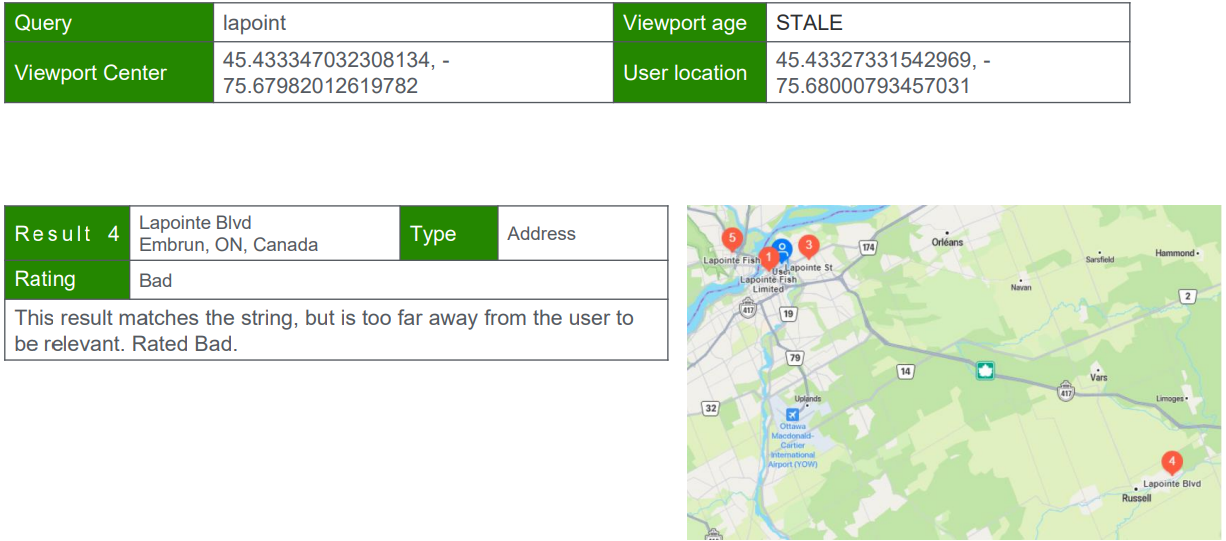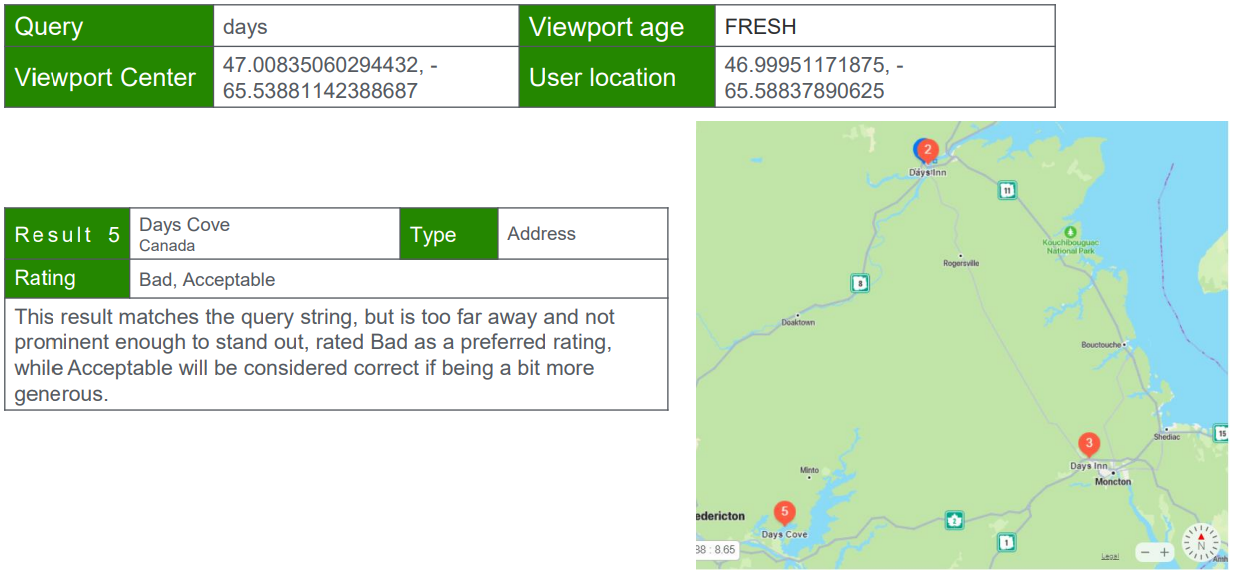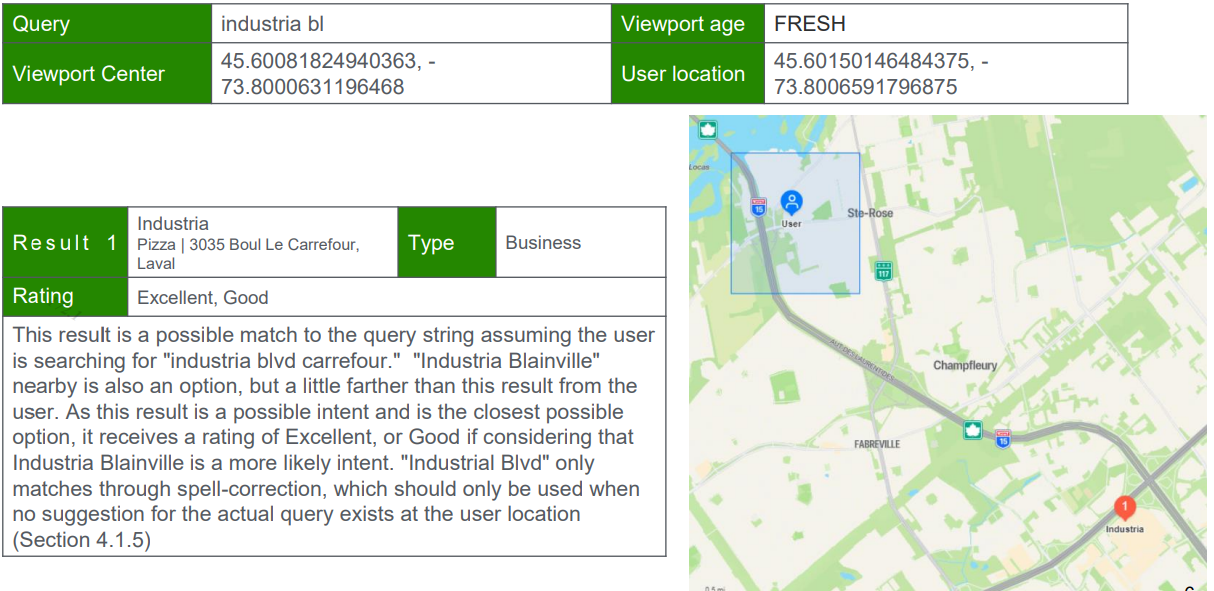Understand difference between Autocomplete and Search
Autocomplete is more lenient than Search.
Please note that in Search, we presume to know the user intent and return only the results that would satisfy the user intent.
However, in Autocomplete, you need to consider the possibility of the query being incomplete and provide a more broader search base for the user.
Also note that prominence is very important while rating Autocomplete results.
Please note
This document was made in October 2022. Guideline sections / page numbers in this document refer to AutoComplete Guideline June 2022. Please follow the latest guideline if there is any conflict between this document and the latest guideline if you have the later version of the guideline than June 2022.
The tasks/answers in this document reflect information when they were made. It might not follow the latest real world anymore.
However, you should still be able to learn concepts how to rate AutoComplete tasks.
If the suggested POI is associated with the locality that matches the query string and is internationally known it can be considered a match through prominence as it may be useful to the user.
Query string | PossiblIe Suggestion | Explanation |
[Agr] |
Taij Mahal Agra, India | Match: A possible intent for the query string is “Agra, India”. The suggestion is for a highly prominent and internationally known POI associated with this locality. This can be considered a prominence match. Good |
[New Yo] | John F. Kennedy International Airport New York | Match: A possible intent for the query string is “New York City”. The suggestion is for a highly prominent transit hub located within New York City. This can be considered a match through prominence.Bad |
[Chicag] | The Magnificent Mile N Michigan Ave, Chicago | No Match: A possible intent for this query string could be “Chicago, IL”. The suggestion is for a locally known shopping district, however, it has no international prominence and would not be useful to a user potentially looking for the locality “Chicago”.Good |

1.1.3.Prominence Match

4.1.4. Category
The query string could be interpreted as a category, if the suggested POI matches the interpreted
category and provides the similar service level, it would be considered a category match.
Query string | Possible Suggestion | Explanation |
[foo] | LaCiccia 291 30th st, San Francisco | Match: A suggestion for an Italian restaurant should be considered a match for a category search “food”. |
[coif] | caribou coffee | Match: A query suggestion for a coffee house chain is a reasonable return for the category search “coffee”. |
[bart] | Richmond Station Richmond | Match: A suggestion for a specific station that is part of the BART transit system is a reasonable return for the category search “bart”. If the query string indicates a specific type of transit system, the suggestion must match that system. |
[cable c] | Powell Stre<st Station San Francisco | No Match: A likely intent for this query string could be the cable car transit system in San Francisco. The suggestion is for a station that belongs to another kind of transit system and does not satisfy the potential category intent. |
[mal] | Bath&Body Works 2021 Westminster Mall, Westminster | No Match: A suggestion for a store does not satisfy a category search for “mall”, even if that store is located within a mall. |

Generally, the farther away the suggestion is from the location intent, the less desirable it becomes. This is especially true for queries highly dependent on distance to the user/viewport, like chain businesses, hospitals, pharmacies, or grocery stores.
Because a user can be provided with multiple similar suggestions, the closest entities providing the expected services should be considered the best options. As suggestions get farther away they should be considered less relevant and demoted accordingly. The context of each situation should be used to determine what constitutes a close or far suggestion. Factors which can affect distance demotions include:
Distance refers to the direct distance from one point to another and is measured via a straight line. There is no need to account for the actual distance required to travel from one point to the other, such as driving distance.


Once you’ve decided how relevant the suggestion is based on user intent, consider the suggestion in the context of all possible suggestions in the real world. Each suggestion is given a rating based on prominence and distance to the user or viewport. The table below shows how they interact: Far distance and low prominence receive low ratings, while prominent suggestions close to the user or viewport receive high ratings.
Distance Prominence | Close | Medium* | Far** |
High | Excellent | Good | Acceptable |
Medium | Excellent to Good | Good to Acceptable | Acceptable to Bad |
Low | Excellent to Acceptable | Good to Bad | Bad |
* Medium distance away compared to similar prominent suggestion
** Far distance away compared to similar prominent suggestion


